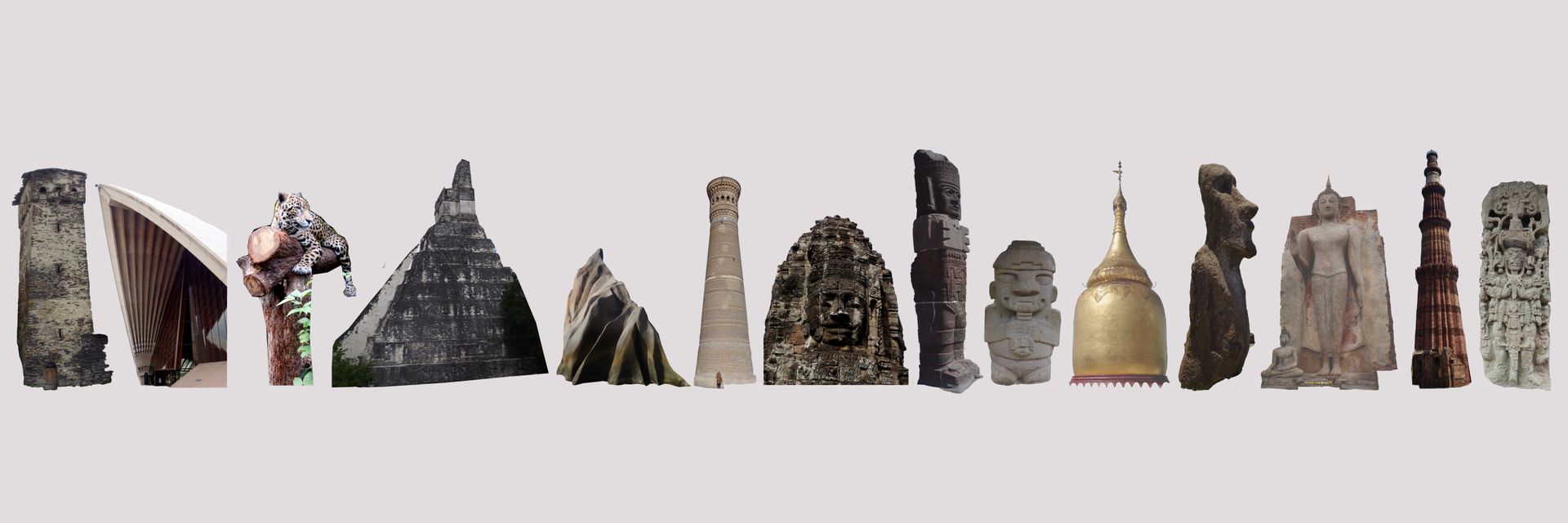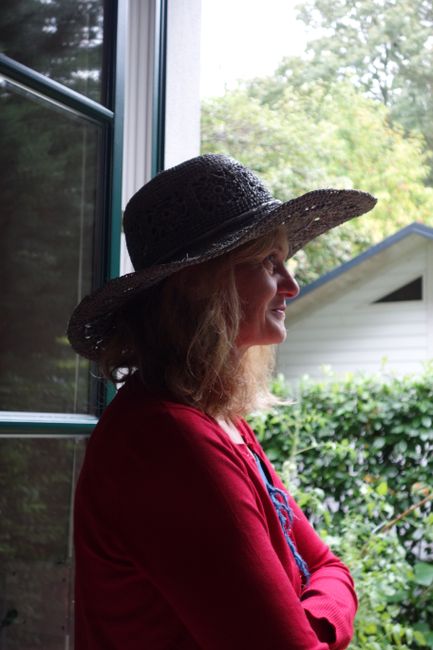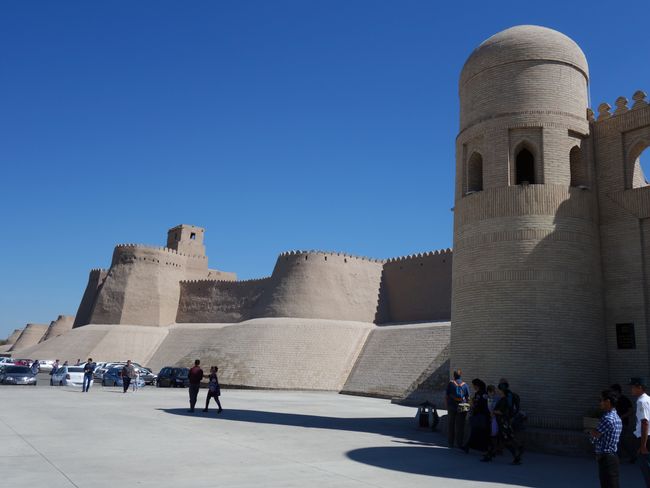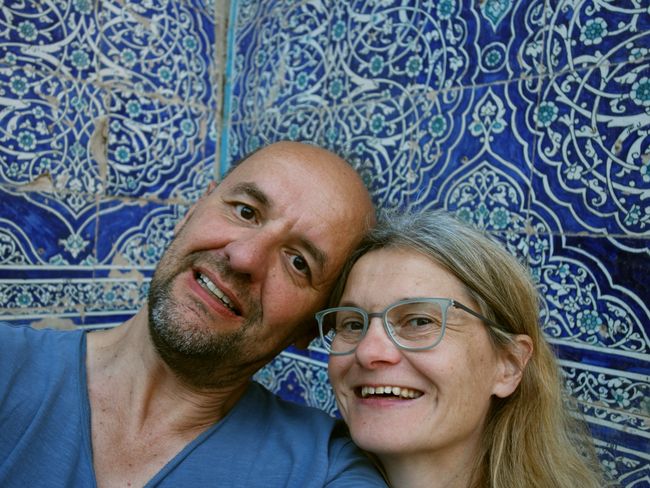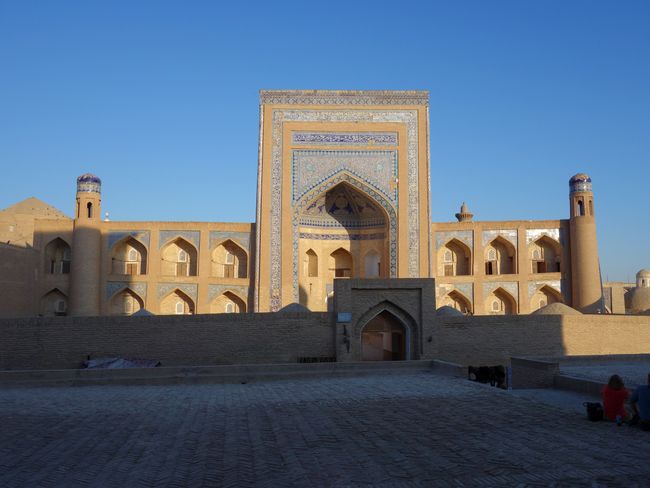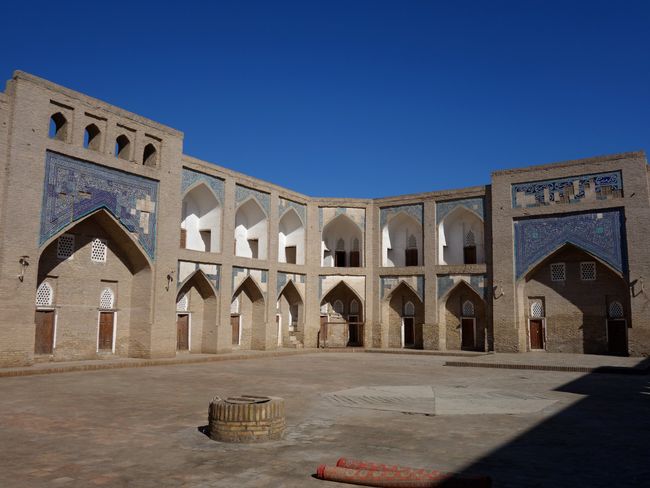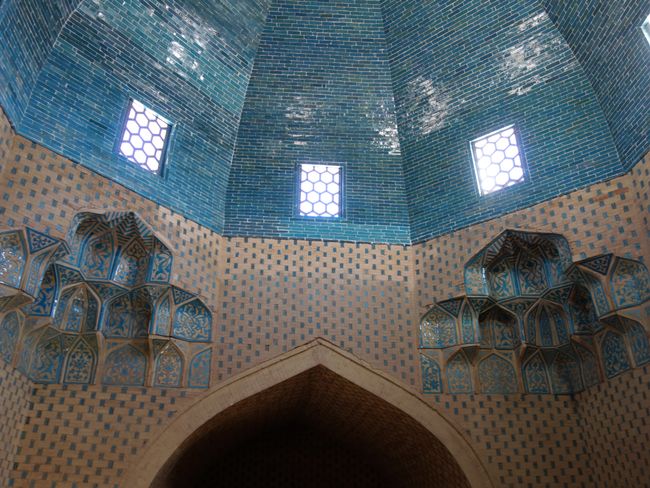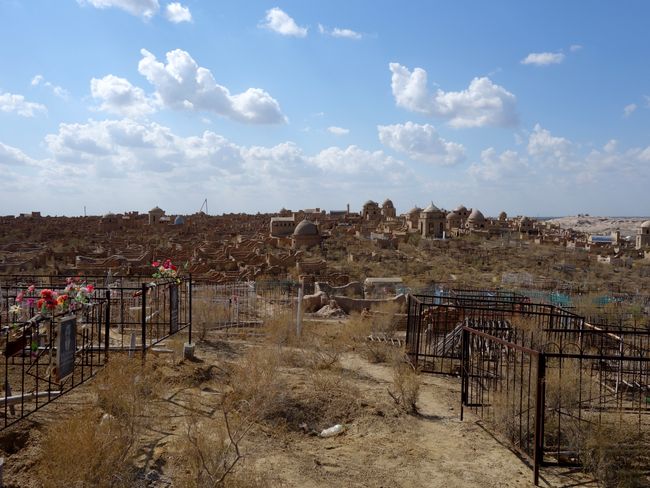In the shared taxi to campus
Publicatu: 21.09.2018
Abbonate à Newsletter
Istanbul is to blame. During my first visit there, I immediately fell in love with the wonderful Islamic architecture (especially Sinan's mosques) - and with the tiles from Iznik, so much so that many years ago we had Iznik tiles from Turkey installed in our bathroom in Vienna. It is only natural that Uzbekistan, one of my long-time dream destinations, came to mind: I have always wanted to see the tiled entrances of mosques and medreses in Samarkand.
And I am a snob (or is it snobbin?). I do not like the smooth, perfect, but soulless and showy buildings of the 19th century. And so Chiva, a highly praised city listed as a UNESCO World Heritage site, which unfortunately mostly dates back to the 19th century, was not originally on our travel itinerary. It was only a trip to the desert that made us come here. Luckily!
But the beginning of our journey in Uzbekistan was not made by any of the major cities, but once again by a minor sight. Mizdakh Khan is a huge cemetery near the Turkmen border and houses a true treasure: a mausoleum from the 12th century, whose interior is infinitely elegant with a simple interplay of adobe bricks and small turquoise glazed ornamental tiles. This semi-underground structure alone is worth the trip, but so is the cemetery, which has been in use for 900 years - even today.
A trip - that meant flying from Tashkent to Nukus (staying there, visiting Mizdakh Khan), and then taking a shared taxi to Chiva, cramped with three people on the back seat of a not very large car, racing along a country road that could very well have led to Georgia. We drove on the left as often as on the right side of the road to avoid potholes.
And Chiva? Simply wonderful. Really. Until 1800, the city was insignificant and then came into too much money with a highly unpleasant business branch: the slave trade. The rulers were unpleasant in other ways as well, and Chiva was considered highly dangerous at the beginning of the 20th century. It disappeared from the world's consciousness when it became part of the Soviet Union in the early 1920s (which declared the city a restricted zone) and only resurfaced in 1968: as a surprisingly well-preserved relic from ancient times.
Today, one walks as if through a film set and expects to meet Scheherazade at any moment. In fact, a historical film was actually shot here today. The special thing is that all the rulers and other dignitaries have immortalized themselves here by having at least one madrasa, a Quran school, built. Sometimes a mosque was added as well. These madrasas shape the cityscape, and so one has the impression of strolling through an oriental campus from the 19th century. In between, there are also two large palaces, a caravanserai, and a fortress - all enclosed by an almost continuous city wall. But there is still room for the residents and their animals (e.g., a huge ram in the backyard).
Abbonate à Newsletter
Rispondi
